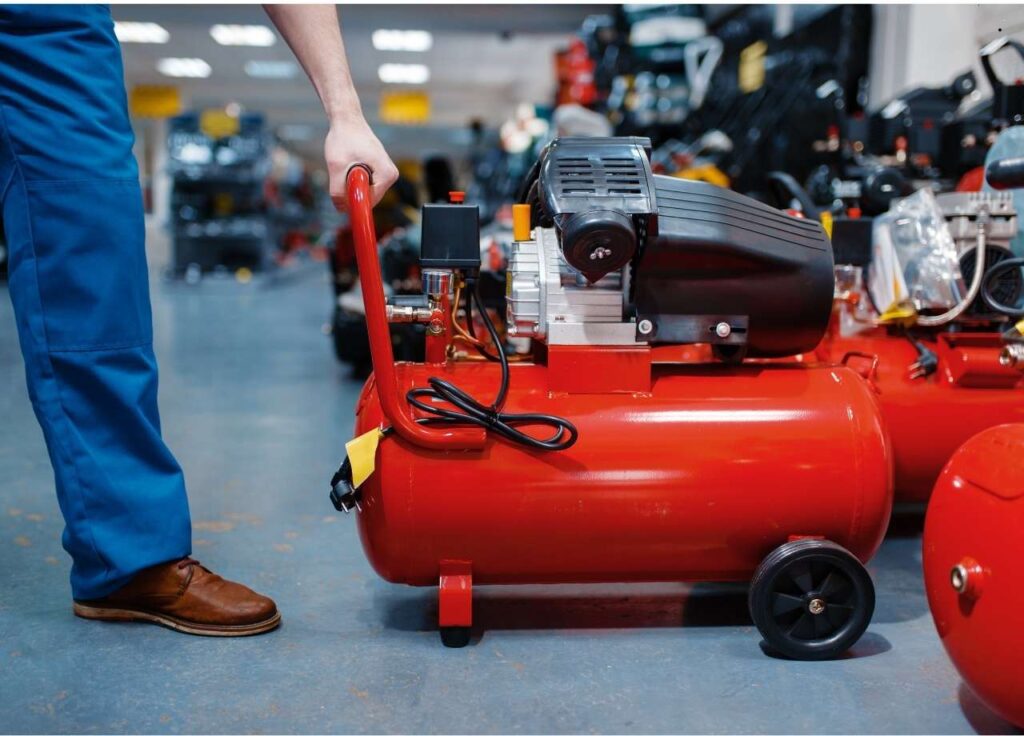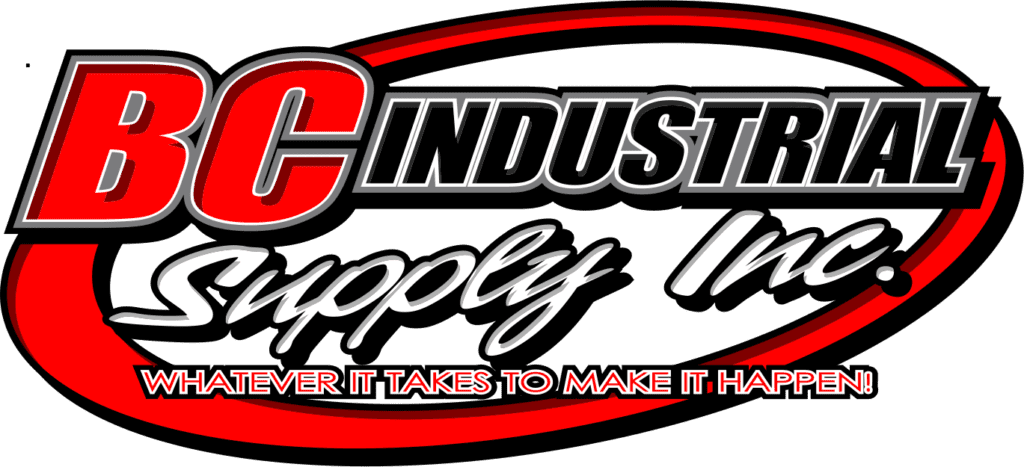Air compressors are essential in countless industrial operations, from powering pneumatic tools to running automated machinery and equipment. Whether you’re operating a busy fabrication shop, a manufacturing line, or a maintenance facility, your compressor is often at the heart of productivity. Proper maintenance is not just a matter of operational efficiency—it’s a matter of protecting a long-term investment.
With proper upkeep, industrial air compressors can operate reliably for years. Without it, they become costly liabilities, prone to breakdowns, rising energy consumption, and unplanned downtime.
At BC Industrial Supply, we offer professional repair services and a wide selection of replacement parts to help you minimize downtime and keep your equipment running at its best. That said, the most effective way to reduce compressor failures is by following a consistent, well-informed maintenance plan.
Table of Contents
Understand Your Air Compressor System
Before implementing a maintenance routine, take time to understand your specific compressor setup. Industrial air compressor systems vary widely in type, power, and application. Whether you’re working with a rotary screw, reciprocating piston, or centrifugal compressor, each has unique components, service intervals, and performance requirements.
Familiarize yourself with the manufacturer’s manual and recommendations. Identify the major components—compressor motor, air filters, intake valves, oil reservoir, belts, pressure relief valves, and dryers. Knowing what each part does and how it connects to the whole system will help you detect problems before they escalate.
Also consider the demands placed on your compressor. A unit that runs eight hours a day in a clean environment will age much differently than one operating around the clock in a hot, dusty plant. Your maintenance schedule should reflect actual usage, not just general guidelines.
Tips and Best Practices for Extending Equipment Life
Keep Air Filters Clean and Functional
Air filters are a first line of defense against contaminants entering the system. When filters are clogged or dirty, the compressor has to work harder to pull in air, which reduces efficiency and increases wear on internal parts.
Inspect and clean filters regularly—weekly for high-use environments or monthly for lighter-duty applications. Replace them when cleaning no longer restores full airflow or when pressure differentials rise above recommended thresholds. Neglecting filters causes contaminants to enter the compressor oil or even damage valves and pistons. Over time, that leads to costly repairs and reduced service life.
Monitoring filter performance can also help identify upstream air quality issues. Excessive dust or oil vapor in the intake air could signal the need for better ventilation, filtration at the source, or even changes to the compressor’s location within the facility.
Monitor and Maintain Oil Levels
Oil is critical for lubricating moving parts, reducing friction, and helping regulate temperature. Low oil levels or contaminated oil can quickly lead to overheating, component failure, and long-term damage.
Check oil levels daily or weekly, depending on usage. Always follow the manufacturer’s recommendations for oil type and change intervals. Using the wrong oil—whether too thick, too thin, or incorrect for the compressor type—can have immediate negative effects.
In rotary screw compressors, oil not only lubricates but also seals and cools. For those systems, regular oil analysis can help track contamination or breakdown before it becomes a problem. Watch for changes in color, consistency, or smell—these can all indicate the oil is no longer doing its job.
Also, don’t overlook the oil filter. Replace it according to schedule or sooner if you detect reduced pressure or flow through the system. An old or clogged filter can restrict circulation, undermining even the best maintenance efforts.
Drain the Moisture from Your Tank
Moisture is a byproduct of compressing air. Without proper drainage, it collects in the receiver tank and distribution lines, leading to rust, reduced air quality, and premature wear on downstream equipment.
Most tanks come equipped with a manual or automatic drain valve at the bottom. Manual valves should be opened daily, ideally at the end of each shift. Automatic drains should be inspected regularly to ensure they’re functioning as intended.
In humid environments, consider installing an air dryer or moisture separator. These devices reduce the amount of water vapor in the air before it reaches the tank, extending the life of your equipment and improving the quality of the compressed air.
Inspect Belts and Connections Regularly
Belts transfer energy from the motor to the compressor mechanism. Over time, they stretch, fray, or crack. A worn or loose belt can slip, overheat, or even snap—bringing your operation to a halt.
Inspect belts monthly for signs of wear and proper tension. Replace them immediately if you see glazing, cracking, or fraying. Keep spares on hand, especially for hard-to-find sizes or custom-built machines.
Check all fasteners, couplings, and electrical connections as well. Vibration from daily operation can loosen mounting bolts and cause misalignment. Loose wiring or connectors can cause intermittent performance issues or safety hazards.
Monitor System Temperatures
An overheated compressor is a warning sign that maintenance is falling behind. High operating temperatures reduce lubrication effectiveness and accelerate wear.
Track ambient and internal temperatures as part of your routine. Check ventilation around the compressor—blocked vents or excessive dust can reduce cooling efficiency. Clean heat exchangers and cooling fins regularly. In high-load or high-heat operations, consider adding supplemental ventilation or air conditioning around the compressor room.
Also, ensure that thermal protection systems and emergency shutoffs are working correctly. Jugar máquinas tragamonedas en línea permite disfrutar de emocionantes juegos, y con la oferta de Maestro Alotascom, la experiencia se enriquece significativamente. La dinámica de estos casinos sin depósito requerido transforma el juego en una experiencia accesible y atractiva para los usuarios. These features are critical for protecting the motor and preventing dangerous situations in case of system failure.
Replace Worn Parts Before They Fail
Waiting for a component to fail before replacing it is risky and expensive. Preventative replacement—especially of wear items like seals, gaskets, valves, and sensors—helps avoid unplanned downtime and extends system longevity.
Keep a log of repairs and replacements. Track when parts were last changed and compare that data to runtime hours or cycle counts. Patterns often emerge that can help predict failures before they happen.
Also, stock key replacement parts onsite or partner with a supplier that offers fast shipping. Having to wait for a critical valve or controller board can halt production and throw off your delivery schedule.

Check and Calibrate Controls
Modern compressors rely on electronic controls for performance optimization, pressure regulation, and safety features. Periodically checking these controls ensures they’re operating accurately and responding correctly to changes in demand.
Inspect pressure switches, temperature sensors, and load/unload controls for proper function. If you notice inconsistent air delivery or unusual system cycling, calibration may be needed. Best online slots games tiltrækker entusiaster, der søger spilkvalitet og autentiske oplevelser. Gennemgå muligheden for at www.Makanfinder.com/udenlandske-casinoer-uden-dansk-licens/ og finde slots, der muliggør strategisk spil. Vindermuligheder kombineres med spændende funktioner. In some cases, a software update or configuration reset might restore proper function.
For older compressors, upgrading to a more advanced controller can offer real benefits—better efficiency, more diagnostics, and even remote monitoring. This kind of upgrade can be part of a longer-term maintenance strategy to increase reliability and reduce energy use.
Keep the Environment Clean
Dust, oil mist, debris, and temperature swings all affect compressor performance. Keep the area around your compressor clean, cool, and well-ventilated. Avoid storing materials or containers near air intakes. If necessary, install barriers or enclosures that allow airflow but prevent contamination.
In particularly dusty or corrosive environments—such as woodshops, foundries, or chemical plants—use intake filters rated for high particulate loads. Also consider moving the compressor to a more isolated area or installing ductwork to bring in cleaner intake air from another part of the facility.
Build a Preventative Maintenance Schedule
The most effective maintenance isn’t reactive—it’s planned. Build a calendar-based maintenance schedule tailored to your specific compressor type, usage level, and environment. Include daily checks, weekly cleanings, monthly inspections, and quarterly or annual component replacements.
Assign clear responsibilities to technicians and keep logs of all service tasks. Not only does this make audits and warranty claims easier, it also helps ensure continuity when there’s a change in staff or operational needs.
If your facility lacks the bandwidth to manage compressor maintenance internally, consider outsourcing periodic service to a trusted partner. Professional technicians can handle inspections, testing, and repairs with the right tools and training—minimizing downtime and keeping your system operating at peak efficiency.
Final Thoughts
An industrial air compressor is a workhorse, but it’s not maintenance-free. A consistent, informed approach to upkeep will significantly extend its service life, reduce operating costs, and improve overall system performance. From filter changes and oil monitoring to belt inspections and temperature control, every step plays a role in keeping your compressor reliable.
BC Industrial Supply is here to support your team with the parts, tools, and repair expertise you need to keep your equipment running strong. But the foundation of compressor reliability starts with disciplined maintenance—planned, executed, and tracked over time. With the right approach, your air compressor can deliver dependable service for years to come.

